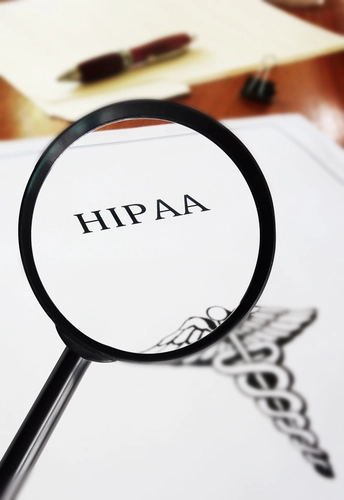Podiatry Coding & Billing Alert
Compare 27698 vs. 27695, Maximize Brostrom Procedure Pay
Understanding primary vs. secondary procedures is key.
When your podiatrist hands you a chart documenting a Brostrom procedure, you may not instinctively know which code to report, particularly since this surgery is often considered a secondary repair. With these simple but essential pointers, however, you’ll be on the way to streamlined Brostrom procedure coding that will allow you to bring in maximum pay.
1. Seek These Documentation Clues
When the podiatrist performs a Brostrom procedure, the documentation should indicate a repair of the lateral ligament, which is on the outside of the ankle. The podiatrist will likely document addressing the anterior talofibular ligament (ATFL), which they will cut and repair to tighten it so it’s more stable in the future. The podiatrist may also perform a calcaneofibular ligament (CFL) reconstruction during the procedure.
The documentation will also typically note a history of recurrent sprains to the ankle, since the intent of the Brostrom procedure is to stabilize ligaments that became loose over time due to repeated injuries to the area.
What the documentation likely won’t include, however, is notation of an emergency. Brostrom repairs are typically performed following a series of wear and tear-type injuries rather than a single acute injury affecting the ankle.

2. Don’t Mix up Secondary, Primary
One source of confusion when selecting the right CPT® code involves differentiating secondary and primary procedures from one another. The documentation of the surgeon should clarify which was performed.
“It is the surgeon’s responsibility to dictate what ligaments were repaired: if it was a primary repair, if a secondary repair was performed, and by what method,” said David Bishop, DPM, AACFAS, assistant residency director at Aultman Alliance Community Hospital, Alliance, Ohio. “Lack of clear dictation of the performed method can result in the inability for the coder to justify billing the code desired. I personally attempt to use the exact wording of the code I wish to use.”
Most coders will read the Brostrom documentation and narrow down their coding choices between the following two codes:
- 27695 (Repair, primary, disrupted ligament, ankle; collateral)
- 27698 (Repair, secondary, disrupted ligament, ankle, collateral (eg, Watson-Jones procedure))
While 27695 describes a “primary” repair, 27698 refers to a “secondary” procedure. And although those terms may not be familiar to every coder, here is a simple explanation that will help you distinguish between them:
“The terms ‘primary’ and ‘secondary’ in the code descriptors denote that code 27695 is reported for an acute injury repair, and code 27698 is reported for a chronic injury repair,” according to the March 2014 issue of CPT® Assistant. “If the surgeon performs a secondary repair, the repair is a reconstruction (code 27698), regardless of when it was done in relation to the time of the initial injury. A primary repair refers to joining two ends of the ligaments together, whereas a secondary repair requires other tissue to be used to do the repair because a primary repair is no longer possible.”
Therefore, the Brostrom procedure (a secondary repair) is best reported using 27698 and not 27695. Although it’s considered a secondary procedure, 27698 is actually the higher-paying surgery, reimbursing about $653, while 27695 reimburses about $492. So it is important you code the procedure your podiatrist actually performed correctly.
As noted above, the podiatrist might address both the ATFL and the CFL during the Brostrom procedure, but that doesn’t mean you can report a second code for this surgery. Code 27698 includes all of the work done repairing both ligaments as part of the procedure.
3. Consider 27658 for Tendon Repairs
Although ligament repairs are described by 27698, you can — and should — submit an additional code if the surgeon repairs the flexor tendon during the surgery. You’ll select the most appropriate repair code depending on the documentation, but typically it will be one of the following:
- 27658 (Repair, flexor tendon, leg; primary, without graft, each tendon)
- 27659 (Repair, flexor tendon, leg; secondary, with or without graft, each tendon)
Reminder: Make sure you follow payor guidelines for the exact way to code these two services if they occur same day.

4. Don’t Forget the Diagnosis Code
To demonstrate medical necessity for the Brostrom procedure, don’t forget to report the most appropriate ICD-10-CM code based on the physician’s documentation. For instance, S93.431- (Sprain of tibiofibular ligament of right ankle) might be an appropriate code, depending on the documentation specifics.
Related Articles
Podiatry Coding & Billing Alert
- Surgical Coding:
Compare 27698 vs. 27695, Maximize Brostrom Procedure Pay
Understanding primary vs. secondary procedures is key. When your podiatrist hands you a chart documenting [...] - Coding Quiz:
Test Yourself on the New Coding Changes for 2023
Make sure you’re ready for the MDM levelling changes and new Z codes for 2023. [...] - ICD-10-CM Coding:
Follow This Guide, Code Hyperhidrosis Diagnosis, Treatments Correctly
Hint: Payers differ on Botox policies. When patients with excessive sweating present to your podiatrist [...] - Coding Quiz Answers:
Check Your Answers to Our Coding Changes Quiz
Once you’ve answered the quiz questions on page 3, compare your answers with the ones [...] - You Be the Coder:
Sequence Your Diabetic Ulcers and Complications Correctly
Question: I have a diabetic patient with peripheral angiopathy who has a stage 4 decubitus ulcer [...] - Reader Questions:
Can You Bill for E/Ms With Smoking/Tobacco Cessation?
Question: We have podiatry patients with peripheral neuropathy and are trying to implement a strong smoking [...] - Reader Questions:
State Unstageable/Unspecified in Pressure Ulcer Skin Graft Procedure
Question: I’m trying to determine the correct ICD-10-CM code to establish medical necessity for a skin [...] - Reader Questions:
How Should This Hammertoe Procedure Be Coded?
Question: One of our patients received a surgical correction for a rigid hammertoe on the right [...]




